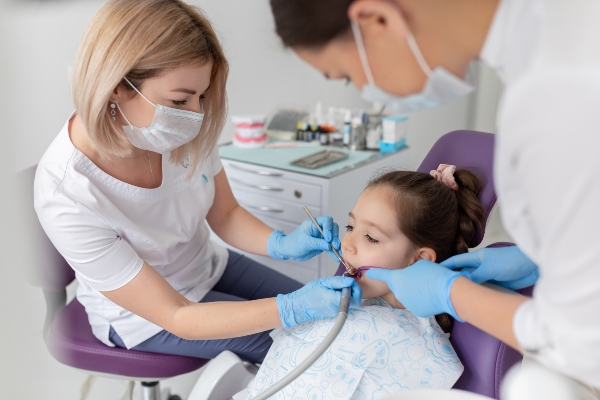From A Kid Friendly Dentist: Why It Is Important for Retained Primary Teeth To Be Extracted

A kid friendly dentist with a specialization in pediatric dentistry typically advises against pulling baby teeth. However, there are times where a dental extraction is required. This can seem counterintuitive, especially when losing baby teeth naturally is such a part of culture and childhood development. The loss of these primary teeth is often a bridge into the world of a child’s imagination, full of fairies and wonder. As magical as those childhood moments can be, though, it is more important for a child to develop a healthy and strong smile.
Importance of baby teeth
While baby teeth may seem like little more than placeholders for the eventual development of adult teeth, these primary formations are important. Primary teeth come in at a time when a child is in the midst of developing fundamental skills like chewing and speaking. Without these baby teeth, children might develop lisps or other speech impediments. These teeth also do stand as placeholders for adult teeth, but sometimes they might hinder that growth.
When tooth extractions are necessary
Most pediatric dentists want to avoid removing primary teeth, especially early in development. However, there are a few problems that may warrant premature extraction:
- Injury or trauma
- Crowding of adult teeth
- Decay
If a child must undergo a primary tooth extraction, then a kid friendly dentist will do everything in their power to make the procedure as comfortable as possible. Pediatric dentists achieve their specialization through extended schooling, which typically includes a focus on child psychology. Therefore, parents of children undergoing an extraction should rest assured that the procedure is commonplace and the dentist is well-trained for child interactions.
Basics of the procedure
While a little anxiety is understandable, tooth extractions on minors are not as involved as those performed on adults. Most procedures start with an X-ray to determine the bone and root condition of the tooth. Then, the dentist applies a local anesthetic and begins gently removing the tooth with forceps by rotating and moving it in the socket. The movement helps to separate the tooth from the periodontal ligaments that hold it to the jaw bone. In extreme circumstances, a child may be sedated to allow for the removal of some gum tissue.
Follow-up care
After the procedure, the dentist applies sterile gauze and possibly a few stitches to help the area heal. It is important to remember that some bleeding after an extraction is standard and that the area should be allowed to clot. Clotting protects against dry socket, a painful condition where the bone is exposed to air, liquids and food. To ensure adequate clotting, most dentists suggest that patients avoid rinsing for 24 hours, after which the patient can rinse with salt water to prevent infection and reduce pain. Also, a child should stick to only soft foods for the first few days and drink plenty of water.
Conclusion
Primary teeth are an essential part of early development, but these teeth can become problematic. For prevention of future issues, a child should see a kid friendly dentist once every six months.
Request an appointment here: https://www.grandparkwaypediatricdental.com or call Grand Parkway Pediatric Dental at (832) 579-0960 for an appointment in our Richmond office.
Check out what others are saying about our services on Yelp: Read our Yelp reviews.
Recent Posts
Dental fillings for kids are one of the most common treatments for tooth decay in children. The earlier tooth decay is detected in a child’s tooth, the easier it is to treat. Let us examine why treating childhood tooth decay is crucial and how a pediatric dentist treats it.According to the Centers for Disease Control…
Dental fillings for kids can be nerve-wracking for some kids, likely due to the necessary tools. While we aim to make this simple process as smooth and painless as possible, we need your help. Getting a firm grasp on what your kids can expect during this procedure and how to prevent a future need for…
Getting dental fillings for kids can help improve your child’s dental health. It can restore the affected teeth and relieve your child’s pain. Understanding the process can help you prepare your child for the next appointment. Here are the details on what parents like you must know about dental fillings for kids.The dentist will discuss…
Child teeth whitening can make a significant difference in a kid’s self-esteem, especially as they grow older and become more aware of their appearance. However, many parents wonder whether whitening is safe and appropriate. A pediatric dentist can tailor teeth whitening to younger patients, focusing on restoring a natural, healthy smile while protecting developing teeth…


